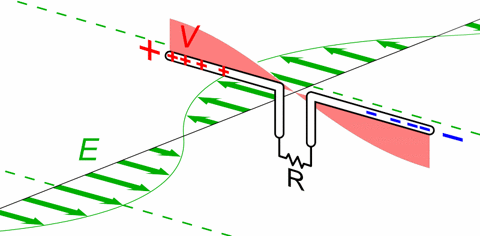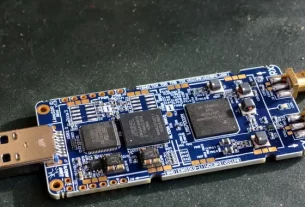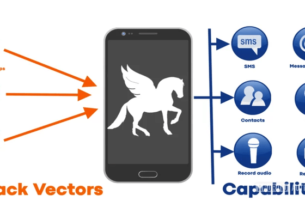Welcome back, my aspiring radio hackers!
Antennas are often overlooked in the grand scheme of radio hacking but they play a crucial role in our capability to send and receive radio signals. Different antennas are optimized for different frequencies and in many cases, without a proper antenna you will likely be frustrated in your efforts.
In SDR for Hackers, different tasks will require different antennas. This is why it is crucial for you to understand the basics of antenna technology.
What are Antennas?
Antennas are devices that convert electrical energy into radio waves and vice versa. They are essential for any radio communications, as they allow radio signals to be transmitted and received.

An antenna works by creating an electric field and a magnetic field. These fields are perpendicular to each other and they oscillate at the same frequency as the radio signal. The oscillating fields radiate radio waves across the air and space.
When a radio wave hits an antenna, it induces an electric current in the antenna. This current is then amplified and processed by a radio receiver. The length of an antenna is important because it determines the frequency of the radio waves that it can radiate. The shorter the antenna, the higher the frequency of the radio waves.
There are many befits of using antennas including:
Increased range: Antennas can increase the range of a radio signal by allowing it to be transmitted over longer distances.
Reduced noise: Antennas can reduce noise by focusing the signal in a particular direction.
Improved signal quality: Antennas can improve the signal quality by increasing the amplitude of the signal.
Types of Antennas
There are many different types of antennas, but some of the most common include:
Dipole antennas: Dipole antennas are the simplest type of antenna. They consist of two conductors that are equal in length and are separated by a small distance.

Yagi antennas: Yagi antennas are more complex than dipole antennas. They consist of a dipole antenna with a number of parasitic elements. The parasitic elements help to improve the gain of the antenna. These type of antenna are excellent point-to-point capture and transmitting such as in Wi-Fi hacking.

Panel antennas: Panel antennas are flat antennas that are made up of a number of radiating elements. They are often used in cellular phones and other mobile devices.

Parabolic antennas are an antenna that uses a parabolic reflector, a curved surface with the cross-sectional shape of a parabola, to direct the radio waves. The most common form is shaped like a dish and is popularly called a dish antenna or parabolic dish. The main advantage of a parabolic antenna is that it has high directivity. It functions similarly to a searchlight or flashlight reflector to direct radio waves in a narrow beam, or receive radio waves from one particular direction only.

The operating principle of a parabolic antenna is that a point source of radio waves at the focal point in front of a paraboloidal reflector of conductive material will be reflected into a collimated plane wave beam along the axis of the reflector. Conversely, an incoming plane wave parallel to the axis will be focused to a point at the focal point. A typical parabolic antenna consists of a metal parabolic reflector with a small feed antenna suspended in front of the reflector at its focus, pointed back toward the reflector.
Parabolic antennas are used in a wide variety of applications, including:
Satellite television
Radio astronomy
Cellular telecommunications
Radar
Wireless Internet
They are also used in some consumer products, such as satellite dishes and Wi-Fi boosters.
Some of the advantages of parabolic antennas:
High directivity: Parabolic antennas can focus radio waves into a narrow beam, which allows them to transmit or receive signals over long distances.
Large aperture: The large surface area of a parabolic reflector allows it to collect more radio waves, which improves the sensitivity of the antenna.
Wide bandwidth: Parabolic antennas can operate over a wide range of frequencies, which makes them versatile for a variety of applications.
The type of antenna that is used depends on the application. For example, dipole antennas are often used for broadcasting, while Yagi antennas are often used for point-to-point communication.
Radio Antenna Length
The radio antenna rule on length is that the antenna should be one-half or one-quarter of the wavelength of the radio signal it is designed to transmit or receive. This is because the antenna needs to be able to efficiently radiate or receive the radio waves.
For example, if the radio signal has a frequency of 100 MHz, then the wavelength of the signal is 3 meters (300,000,000 m/s / 100,000,000 cycles/s = 3m). So, the antenna should be either 1.5 meters long (half-wavelength) or 0.75 meters long (quarter-wavelength).

In practice, it is often not possible to make an antenna exactly one-half or one-quarter of the wavelength. In these cases, the antenna can be made shorter by using a loading coil. A loading coil is a small coil of wire that is added to the antenna. The coil increases the electrical length of the antenna, making it act as if it were longer.
The length of the antenna is an important factor in the performance of the antenna. A well-designed antenna with the correct length will have good radiation efficiency and will be able to transmit or receive radio signals over a long distance.
Some additional things to keep in mind about the radio antenna rule on length:
The antenna length rule applies to all types of radio antennas, including monopoles, dipoles, and Yagi antennas.
The antenna length rule is not always exact. In some cases, the antenna can be slightly shorter or longer than the wavelength of the signal and still perform well.
The antenna length rule is only a starting point. The actual length of the antenna may need to be adjusted to achieve the desired performance.
Summary
Antennas are an essential element of a well functioning radio system including our SDR for Hackers. It is critical to understand antenna technology to select the proper antenna for the job. In some cases, a simple dipole antenna will suffice but satellite hacking will require a special panel antenna. I highly recommend a parabolic antenna for capturing and amplifying many radio signals.





